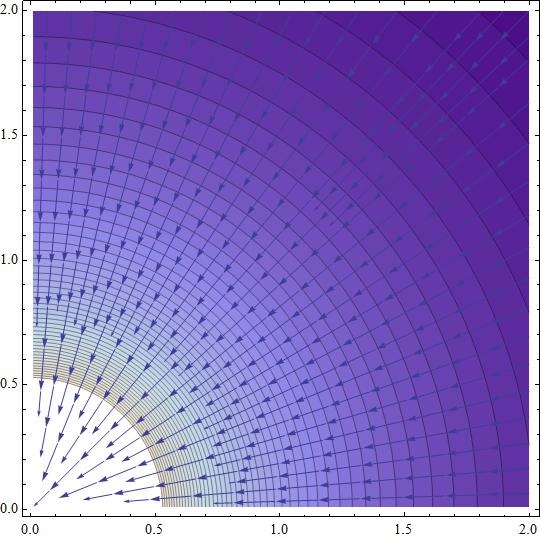if this is
#f = f(r, theta, varphi) = 1/|vec r| = 1/r#
then using
#nabla f = (partial f)/(partial r) hatr+ 1/r (partial f )/(partial theta) hat theta
+ 1/ (r sin theta) (partial f )/(partial varphi) hat varphi#
it's simply
#- 1/r^2 * hat r = - 1/|vec r|^2 * hat r#
#= - vec r /|vec r| ^3 #
i don't know the physical context, though, so i'd seek a second opinion if anyone's around
The gradient of a scalar function, shows the direction in which the function increases at any point #{x,y}#. In the two dimensional case #vec r = {x,y}# so #1/abs(vec r) = 1/sqrt(x^2+y^2)# and #grad 1/abs(vec r) = {-x/(x^2 + y^2)^(3/2), -y/(x^2 + y^2)^(3/2)} = -(vec r)/abs(vec r)^3#. Attached a plot showing the contours of #1/abs(vec r)# with the gradient vector field superimposed.

PS switching this into rectangular gets you the same answer if i understand what you are trying to do correctly



